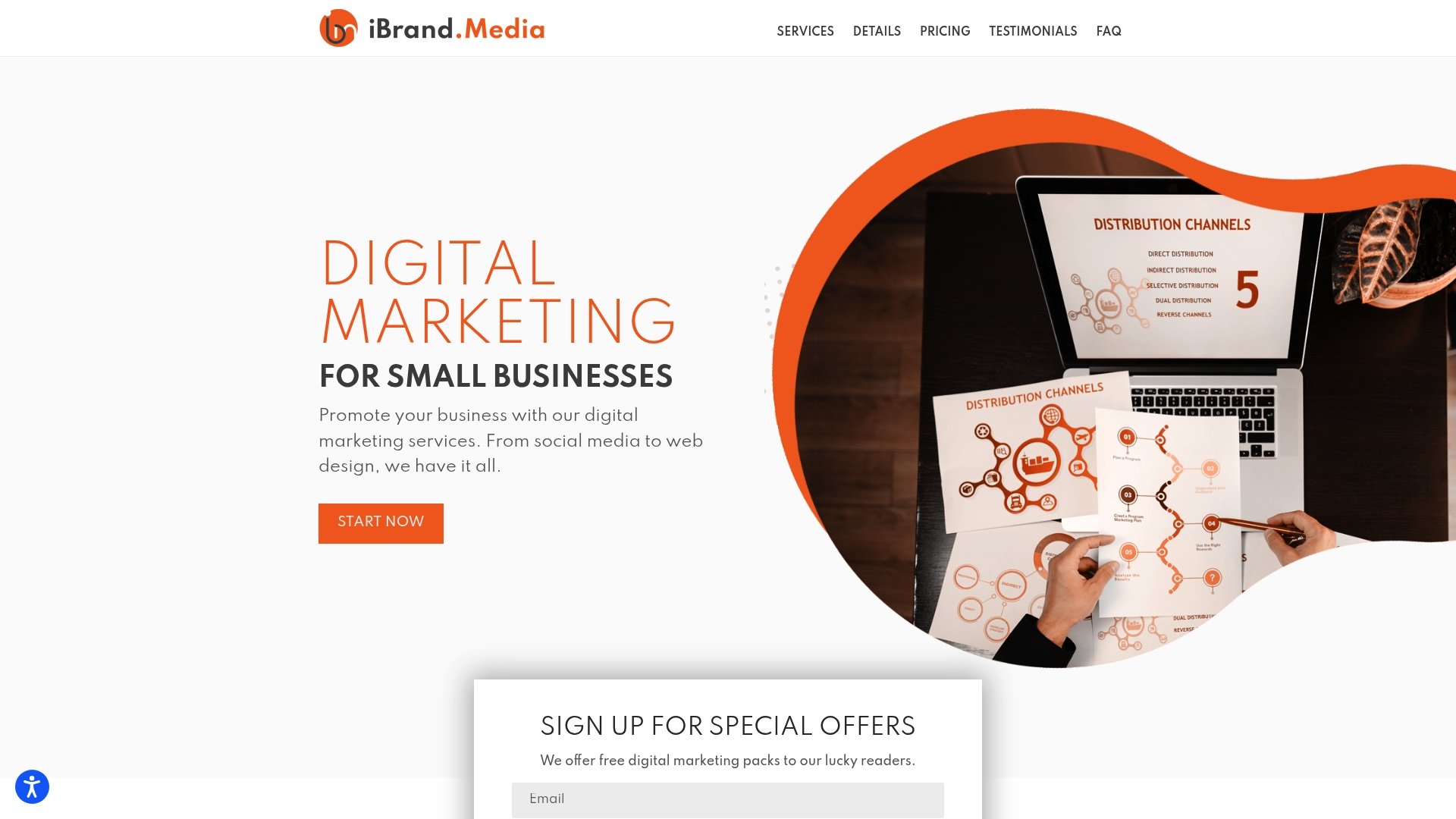Pay-per-click advertising drives over 45 percent of all page clicks for high commercial intent searches, giving businesses immediate visibility where it matters most. For companies looking to connect with motivated buyers and maximize every marketing dollar, understanding PPC can mean the difference between wasted spending and smart growth. This guide reveals how PPC works, why it stands out from other digital strategies, and what it takes to launch a campaign that delivers real results.
Table of Contents
- What Is PPC Advertising and How It Works
- Different Types of PPC Campaigns Explained
- Key Steps for Setting Up PPC Effectively
- Understanding Costs and Budget Management
- Common PPC Mistakes Small Businesses Should Avoid
Key Takeaways
| Point | Details |
|---|---|
| Understanding PPC Advertising | PPC is a cost-effective digital marketing strategy where businesses pay for each click on their ads, connecting directly with potential customers at the moment of interest. |
| Types of PPC Campaigns | Key formats include search ads, display ads, and social media ads, each targeting different audience segments for specific marketing objectives. |
| Effective PPC Setup | Success hinges on defining clear campaign goals, conducting thorough keyword research, and crafting compelling ads while continuously monitoring performance. |
| Avoiding Common Mistakes | Small businesses should focus on comprehensive keyword research, landing page optimization, and campaign monitoring to maximize the effectiveness of their PPC efforts. |
What Is PPC Advertising and How It Works
Pay-per-click (PPC) advertising represents a strategic digital marketing approach where businesses pay a fee each time their online advertisement gets clicked. According to Wikipedia, this internet advertising model allows advertisers to bid on specific keyword phrases relevant to their target market, with ads appearing in search engine results.
The core mechanism of PPC is straightforward yet powerful. When potential customers search for keywords related to a business’s products or services, targeted ads appear prominently in search results. Coursera explains that this model enables advertisers to connect directly with individuals actively searching for related offerings, making it an exceptionally cost-effective method of driving targeted website traffic.
Key components of an effective PPC strategy include:
- Keyword Research: Identifying precise search terms potential customers use
- Ad Copy Development: Creating compelling, relevant advertisement text
- Landing Page Optimization: Designing web pages that convert clicks into customer actions
- Budget Management: Controlling spending while maximizing return on investment
For small business owners looking to understand their advertising options, understanding local PPC can provide even more targeted insights into how geographical proximity impacts digital marketing strategies. By mastering these fundamental PPC principles, businesses can quickly boost their online visibility and attract potential customers with precision and efficiency.
Different Types of PPC Campaigns Explained
PPC campaigns come in several strategic formats designed to help businesses reach their target audiences effectively. GeeksforGeeks highlights three primary types of PPC advertising: search ads, display ads, and social media ads, each serving unique marketing objectives and targeting different audience segments.
Search Ads represent the most direct PPC approach. These advertisements appear directly in search engine results when users enter specific keywords related to a business’s products or services. According to Coursera, search advertising enables businesses to target users based on their immediate search queries, providing maximum relevance and potential conversion opportunities.
The three main PPC campaign types include:
- Search Advertising: Text-based ads appearing in search engine results
- Display Advertising: Visual banner ads shown across websites and online networks
- Social Media Advertising: Targeted ads displayed on platforms like Facebook, Instagram, and LinkedIn
Small business owners can gain deeper insights by exploring our guide on paid advertising strategies, which offers comprehensive approaches to maximizing digital marketing investments across these diverse PPC campaign types. Understanding the nuanced differences between these advertising methods allows businesses to craft more precise, cost-effective marketing strategies tailored to their specific audience and business goals.
![]()
Key Steps for Setting Up PPC Effectively
Launching a successful PPC campaign requires strategic planning and precise execution. MyIDCM outlines a comprehensive approach to setting up effective pay-per-click advertising that can help businesses maximize their digital marketing efforts and achieve meaningful results.
Campaign Goal Setting is the critical first step in PPC strategy. Businesses must define clear, measurable objectives such as increasing website traffic, generating qualified leads, or driving direct sales conversions. According to Coursera, selecting the right advertising platform is equally important – whether that’s Google Ads, Facebook Ads, or other targeted networks that align with your specific audience demographics.
The fundamental steps for setting up a PPC campaign include:
- Define Precise Campaign Goals
- Conduct Comprehensive Keyword Research
- Craft Compelling Ad Copy
- Establish Strategic Budget Allocation
- Implement Continuous Performance Monitoring
Small business owners can gain deeper strategic insights by exploring our guide on effective online advertising tips, which provides additional nuanced approaches to digital marketing investment. Mastering these PPC setup principles enables businesses to create targeted, cost-effective campaigns that deliver measurable results and meaningful customer engagement.

Understanding Costs and Budget Management
PPC advertising requires a nuanced approach to financial management that goes beyond simple spending. Coursera explains that costs in pay-per-click campaigns are fundamentally determined by cost-per-click (CPC), which fluctuates based on keyword competition and market dynamics.
Effective budget management is crucial for maximizing return on investment. MyIDCM emphasizes the importance of setting clear budgets and implementing strategic bidding approaches that align with specific business objectives. Advertisers must develop a flexible financial strategy that allows for real-time adjustments based on campaign performance and emerging market trends.
Key strategies for managing PPC advertising costs include:
- Establish Daily and Campaign Budget Limits
- Select Appropriate Bidding Strategies
- Monitor Keyword Performance Continuously
- Focus on High-Converting Keywords
- Analyze Performance Data Regularly
Small business owners seeking to optimize their digital marketing investments can explore affordable digital marketing tactics that provide additional insights into cost-effective online advertising strategies. Understanding these financial nuances enables businesses to create targeted, efficient PPC campaigns that deliver maximum value without unnecessary expenditure.
Common PPC Mistakes Small Businesses Should Avoid
Navigating the complexities of pay-per-click advertising requires strategic awareness and proactive management. Coursera highlights critical mistakes that can derail even the most well-intentioned PPC campaigns, emphasizing the importance of understanding potential pitfalls before launching digital advertising efforts.
Keyword Research and Targeting represent fundamental areas where small businesses often stumble. MyIDCM warns that setting unclear goals and neglecting negative keywords can significantly undermine campaign performance. Businesses must invest time in comprehensive keyword research, ensuring their ads reach the most relevant audience while avoiding unnecessary spending on irrelevant clicks.
Key PPC mistakes to avoid include:
- Inadequate Keyword Research
- Poor Landing Page Optimization
- Neglecting Campaign Monitoring
- Ignoring Negative Keywords
- Failing to Test Ad Copy
Small business owners can gain deeper insights by exploring our guide to common digital marketing mistakes, which provides a comprehensive overview of potential pitfalls in online advertising. Understanding and proactively addressing these common errors can transform PPC from a potential budget drain into a powerful tool for business growth and customer acquisition.
Take Your PPC Advertising From Theory to Results Today
If you found the insights on pay-per-click advertising in this article helpful but feel overwhelmed by keyword research or campaign setup you are not alone. Many small businesses struggle to manage budgets and avoid common PPC mistakes while trying to increase online visibility quickly and affordably. The good news is you do not have to figure this out by yourself. At ibrand.media we specialize in delivering personalized digital marketing strategies tailored to your unique goals like boosting traffic, generating leads, or driving sales through expert PPC management and optimization.

Start winning with PPC campaigns that convert by partnering with our team. Explore proven advertising approaches in our Uncategorized category. Take control of your online growth now and discover custom plans designed just for your business success at ibrand.media. Don’t wait for your competitors to outrank you make your move today.
Frequently Asked Questions
What is PPC advertising?
PPC, or pay-per-click advertising, is a digital marketing strategy where businesses pay a fee each time their ad is clicked. Advertisers bid on keywords to ensure their ads appear in search results for those terms.
How do I set up an effective PPC campaign?
To set up an effective PPC campaign, first define clear campaign goals, conduct thorough keyword research, craft compelling ad copy, establish a strategic budget, and continuously monitor campaign performance for optimization.
What are the different types of PPC campaigns?
The main types of PPC campaigns include search ads, which appear directly in search engine results; display ads, which are visual banners shown on websites; and social media ads, which run on platforms like Facebook and Instagram.
How can I manage costs in PPC advertising?
To manage costs in PPC advertising, set daily and campaign budget limits, select appropriate bidding strategies, monitor keyword performance, focus on high-converting keywords, and regularly analyze performance data.
Recommended
- What is Local PPC? Understanding Local Online Advertising | Ibrandmedia
- Paid Advertising Explained: Simple Guide for Small Businesses 2025 | Ibrandmedia
- SEO vs Paid Advertising: Understanding Their Differences | Ibrandmedia
- Effective Online Advertising Tips for Small Businesses 2025 | Ibrandmedia
- Understanding Digital Marketing for Beginners | Prodcast
- Understanding Advertising in Podcasts: What You Need to Know | Prodcast

Recent Comments